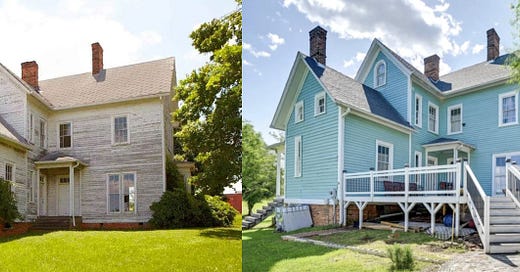This is an excerpt from my book, The Grassroots Guide To Saving What Matters: Historic Preservation For Everyday People.
Common thinking tells a lot of people (way too many people) that it makes more economic and environmental and practical sense just to tear an old house down. “Bring in the bulldozers. It is nothing but a money pit, impossibly expensive to restore, trouble waiting to happen down the line.” In short, most of the time we say “Why bother?”
Unpacking that perspective, however, reveals an entirely different set of answers that may surprise you.
Who loves a good landfill? Outside of demolition contractors, no one raises a hand. But that is where old houses end up. This may be one of those things you knew but never really thought about.
Those mountains of debris aren’t just made up of your old coffee grounds and empty cans of beans. Construction debris accounts for one quarter to one third of the contents of our landfills.
What is more - look at what we are saving. Old houses are made of old-growth wood from large trees - a superior product whose density and strength far outshines the rushed-to-market wood that supplies today’s construction industry, which is a beast that consumes and demands more at an alarming rate.
Beyond the wood, we routinely are throwing away natural stone, hand-formed bricks, early glass, slate and copper roofing - all of these are either difficult to replicate or prohibitively expensive.
From this perspective, dealing with these old structures might carry more benefits than pitfalls. And in the process, we can save room in the landfill for more coffee grounds and empty cans of beans. In fact, looked at from this angle, saving a structure from demolition is recycling at its finest.
Photo of before-and-after views of Model Farm via Preservation North Carolina.
The Grassroots Guide is now shipping. Ordering information is right here.






